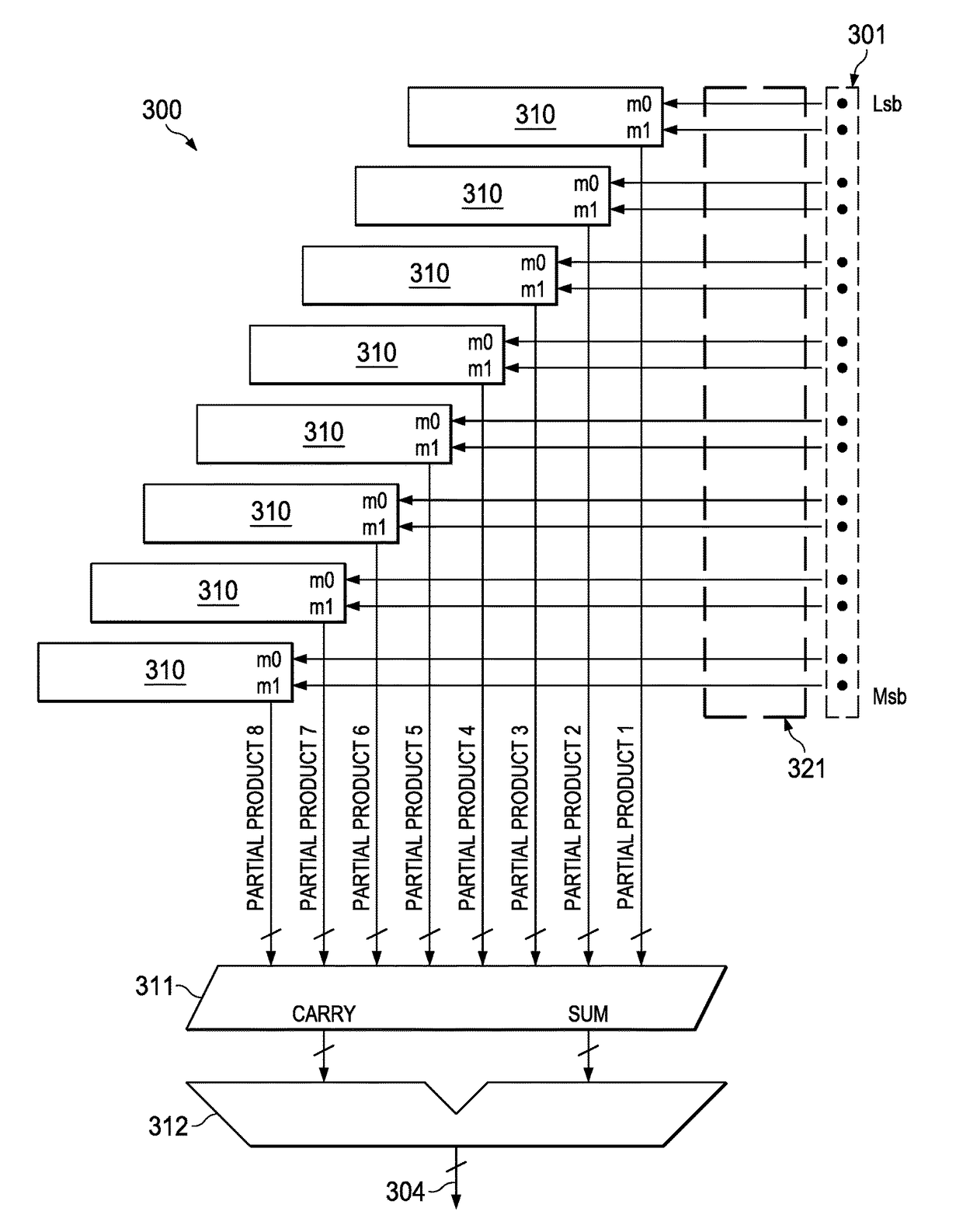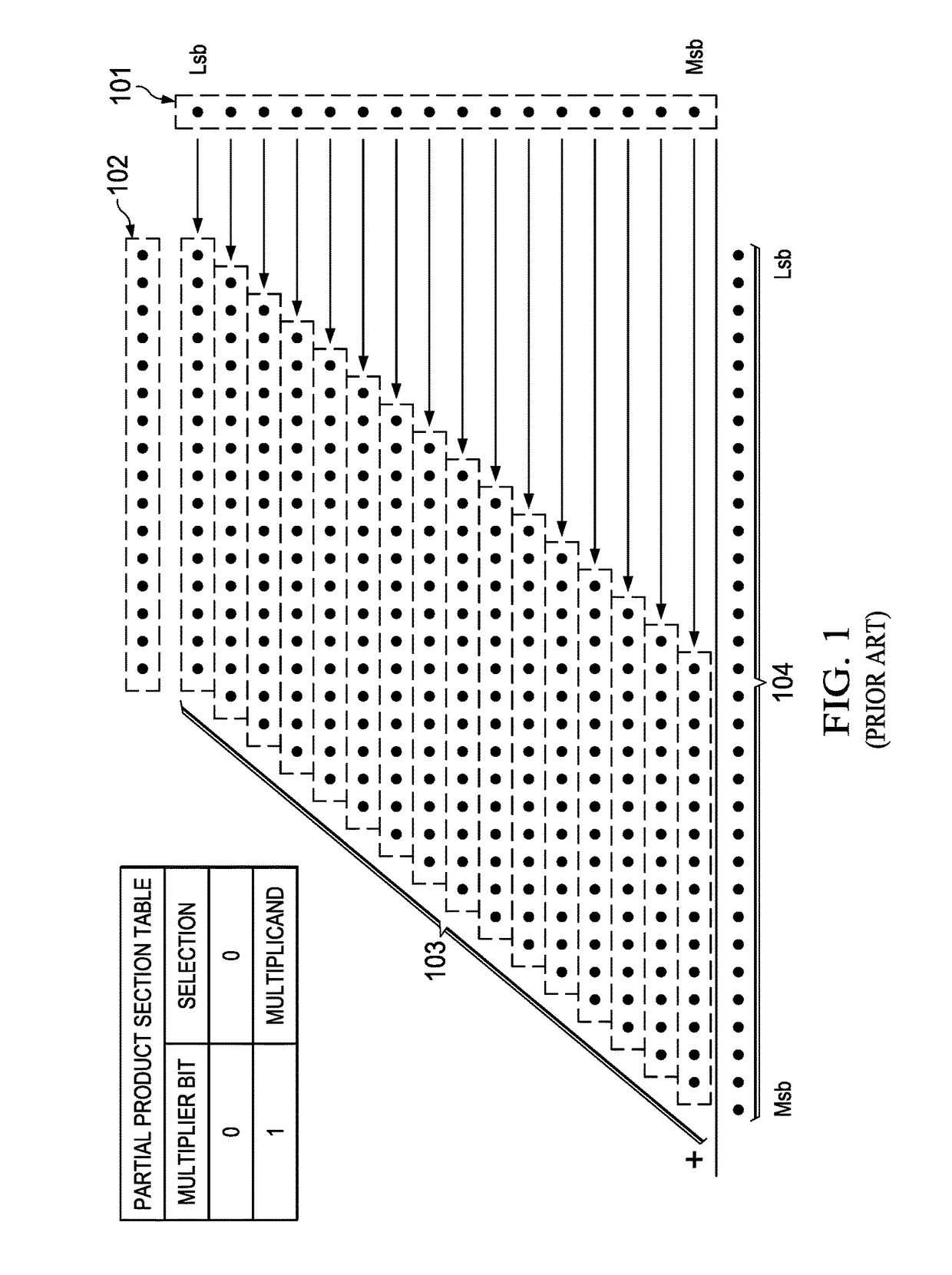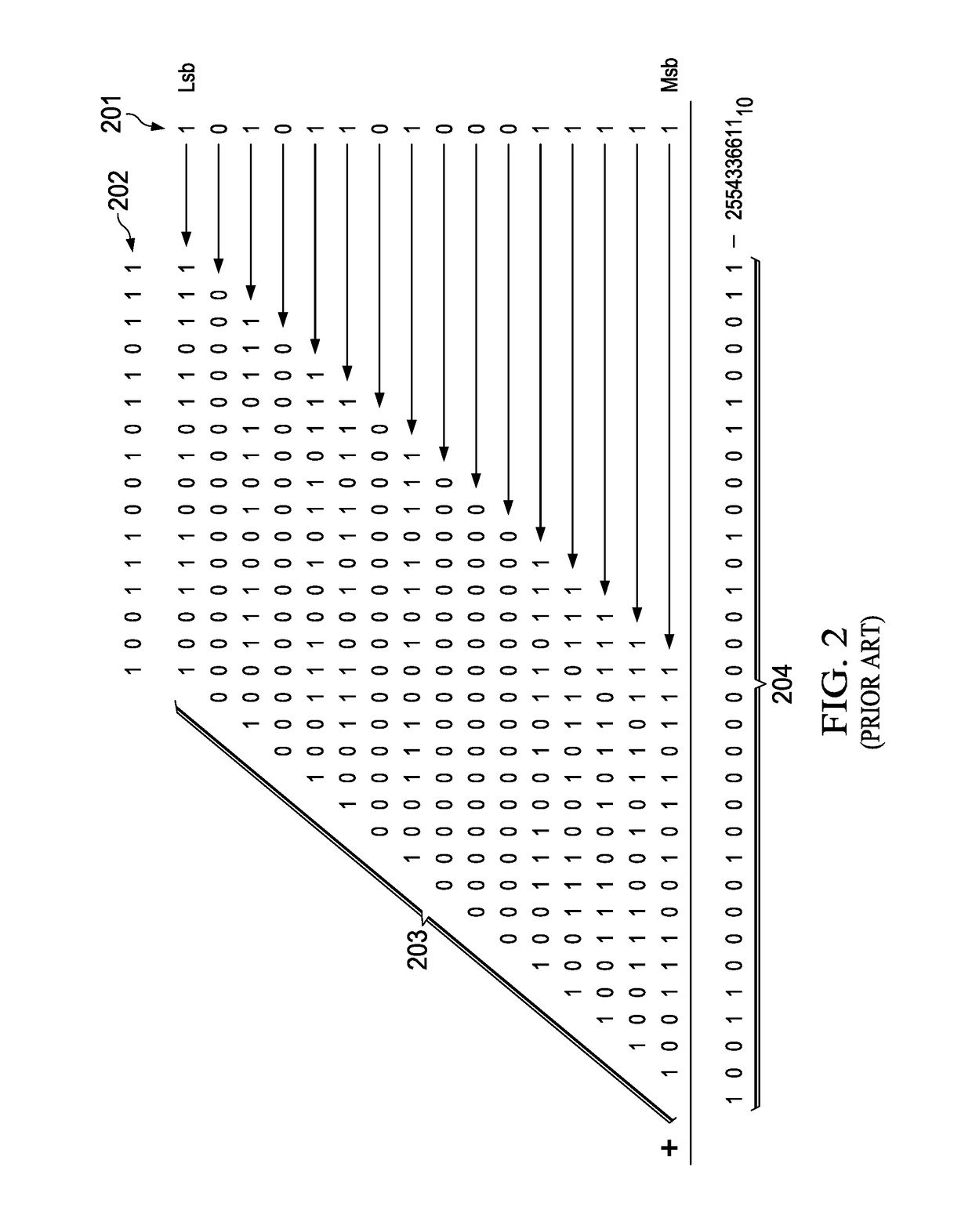Methods and apparatuses for performing multiplication
a multiplication and multiplication technology, applied in the direction of logic circuits characterised by logic functions, instruments, computations using denominational number representations, etc., can solve the problems of insufficient waiting time, insufficient refreshing circuitry, and insufficient ic space for memory cells, so as to achieve the effect of consuming ic spa
- Summary
- Abstract
- Description
- Claims
- Application Information
AI Technical Summary
Benefits of technology
Problems solved by technology
Method used
Image
Examples
example 1 multiplication
of Constant π / 2 to a 16 Bit Random Number
[0043]FIGS. 3 and 4 depict an exemplary embodiment of this invention, in which a constant is multiplied to a 16 bit number 301. The constant chosen for the illustrative embodiment is 1.57077, which is approximately one half of the irrational number π. In binary representation, the number may be expressed by an 18 bit binary number 00 1100 1001 0000 1111. If more precision is desired, the number of bit string in the representation may be lengthened.
[0044]The partial product generators PPGs 310 in this example are each configured with a 18-bit output terminal and a 2-bit input terminal—radix 4. This exemplary PPG may be constructed in a single integrated circuit chip with logic elements such as AND gates, OR gates, XOR gates, INVETERs, and wires, or it can be constructed with discrete logic components connected by wires.
[0045]In the following description, the notation pp[m] designates the mth of the 18 outputs of each PPG; and m[0] is the least...
example 2
Radix 8 Multiplication of Constant π / 2 to a 16 Bit Number
[0062]The following example is implementation in radix 8 of the multiplication of the same constant π / 2 to a 16-bit number. A person skilled in the art of computer science and engineering will appreciate how this implementation can reduce the number of PPGs with slightly more complex PPG construction and may follow the example in applying it to implementations using radices higher than 8.
[0063]FIGS. 5 and 6 depict the illustrative embodiment, in which the constant π / 2 is multiplied to a 16 bit random number 501 in radix 8. The difference between this embodiment and the one in example 2 is that the multiplier is grouped in three non-overlapping bits instead of two. Because the multiplier is a 16-bit number, the last sub-group after partition will only have one-bit—two bits fewer than the other sub-groups.
[0064]In FIG. 5, the partial product generator PPG 510 has 3-bit input and 19-bit output. Six PPGs are involved in this multi...
example 3 multiplication
of Constant 1 / Ln 2 to a 16 Bit Binary Number
[0074]The constant 1 / ln 2—the reciprocal of the natural logarithm of 2—is another constant frequently encountered in modern computer science and engineering. FIG. 7 depicts an illustrative embodiment of a PPG that implements the multiplication of this constant and a random number. In decimal representation 1 / ln 2 equals 1.4426; and in 18 bit binary representation it is 00 1100 1001 0000 1111.
[0075]FIG. 7 depicts one possible construction of a PPG for multiplying 1 / ln 2. The PPG may be constructed in a single integrated circuit chip with AND gates, OR gates, XOR gates, INVETERs, and wires, or with discrete components. Similar to the previous examples, the notation pp[m] designates the mth of the 18 outputs of the PPG; and m[0] is the least significant bit and m[1] is the most significant bit of the 2-bit multiplier subsets.
[0076]The partial products of 1 / ln 2 and the two-bit binary numbers 00, 01, 10, and 11 are listed in the equations belo...
PUM
 Login to View More
Login to View More Abstract
Description
Claims
Application Information
 Login to View More
Login to View More - R&D
- Intellectual Property
- Life Sciences
- Materials
- Tech Scout
- Unparalleled Data Quality
- Higher Quality Content
- 60% Fewer Hallucinations
Browse by: Latest US Patents, China's latest patents, Technical Efficacy Thesaurus, Application Domain, Technology Topic, Popular Technical Reports.
© 2025 PatSnap. All rights reserved.Legal|Privacy policy|Modern Slavery Act Transparency Statement|Sitemap|About US| Contact US: help@patsnap.com



